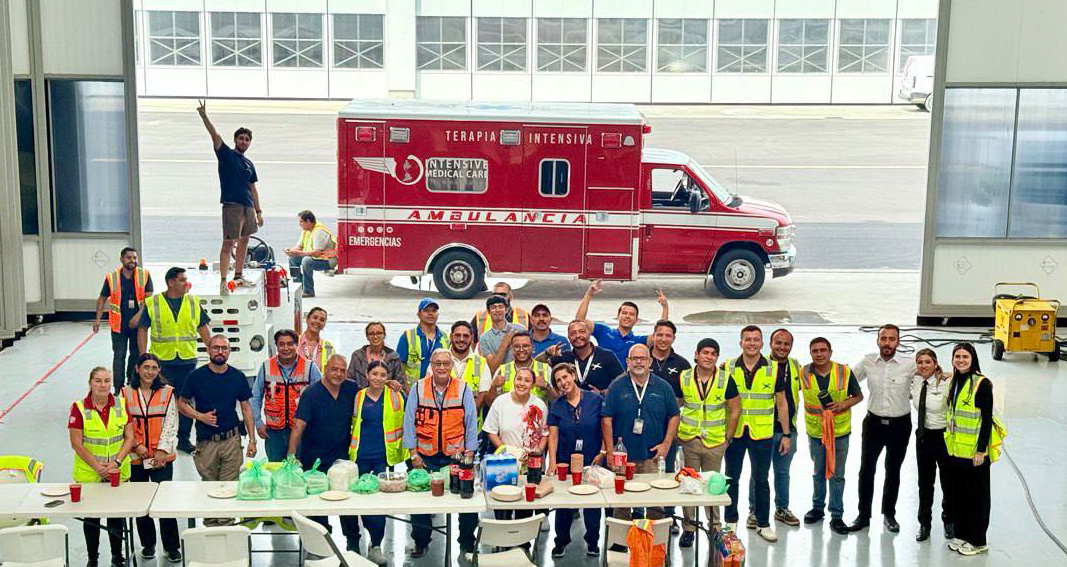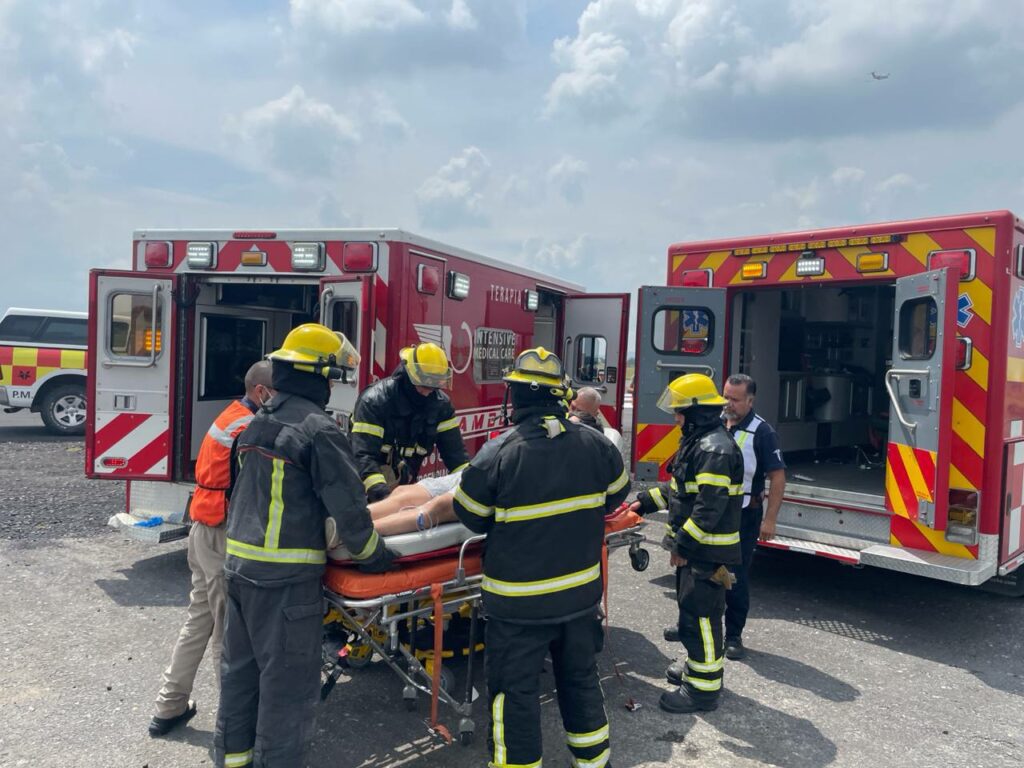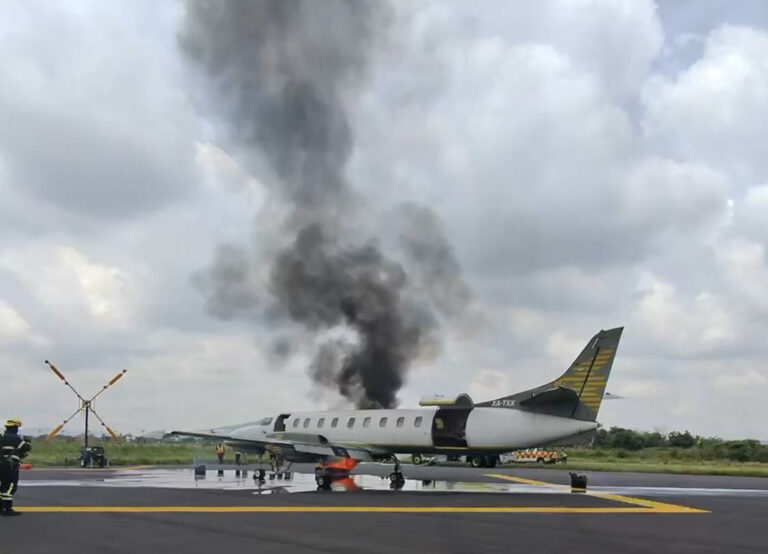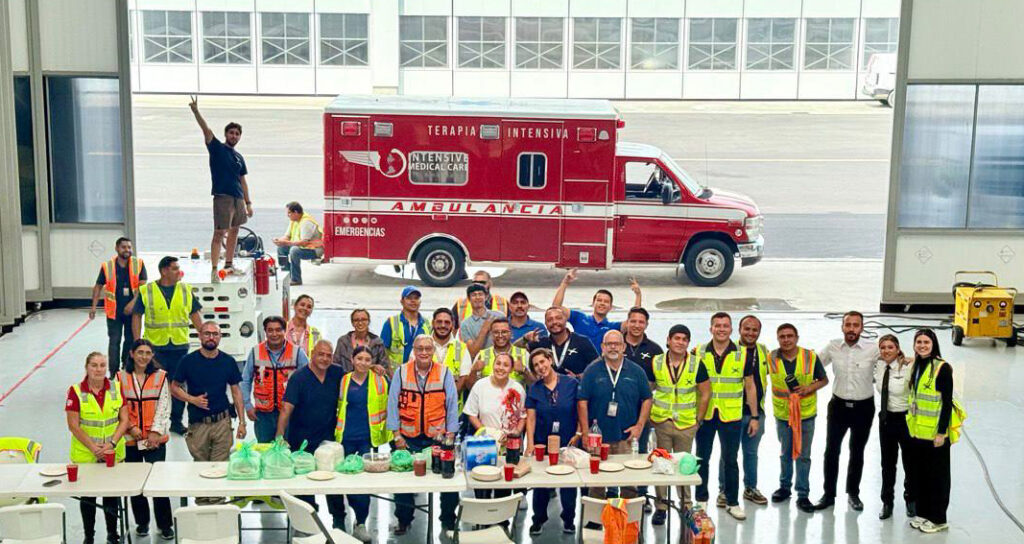Emergency Drill Day with AirLink Ambulance at Guadalajara Airport

This week we carried out the Full-Scale Safety Management System (SMS) Drill 2025 of AirLink Ambulance, in close collaboration with Guadalajara International Airport (GAP).
The exercise recreated a challenging scenario: a runway excursion caused by hydraulic failure, followed by a fire in the right engine triggered by the ingestion of Foreign Object Debris (FOD) during landing. Together with GAP, we designed this scenario as part of their SAFETY 2025 Drill, where our organization was invited to participate as a general aviation partner.

For several months, our team has been working hand-in-hand with the Commander of the Rescue and Firefighting Service (SSEI), who coordinates these drills at the airport. In our planning sessions, we shaped every detail: from assigning roles to arranging the technical resources and logistics needed to bring realism to the exercise.
On the day of the drill, colleagues from across the company stepped into different roles, such as pilots, doctors, patients, companions, mechanics, and observers. It was inspiring to see so many areas come together: Flight Crew, Medical Team, Operations, Administration, Maintenance, Quality & Training, SMS, the Emergency Response Group (GEAE), Intensive Medical Care, SENEAM, and AFAC.
For two hours, one of the official runways (Runway 11 Left) was closed to make room for the simulation. GAP provided an aircraft where a controlled fire was set on the right engine, while “passengers” onboard evacuated following the correct procedures. The response protocols of AirLink Ambulance were fully activated. Our maintenance team, ground ambulance, operations, and dispatch joined forces with GAP’s SSEI, their ambulances, and the airport authorities who rushed to the scene.
These drills are part of our yearly commitment, sometimes tabletop, sometimes full-scale, always in line with NOM-064-SCT3-2023, which guides us as a certified organization in SMS. The planning and execution fall under our SMS team, but in truth, every area of the company stands behind them.
The purpose goes beyond compliance. It’s about making sure that our crews, onboard doctors, mechanics, and emergency responders are truly ready, tested in realistic conditions, continuously trained, and able to respond quickly and effectively if a real emergency ever arises.

